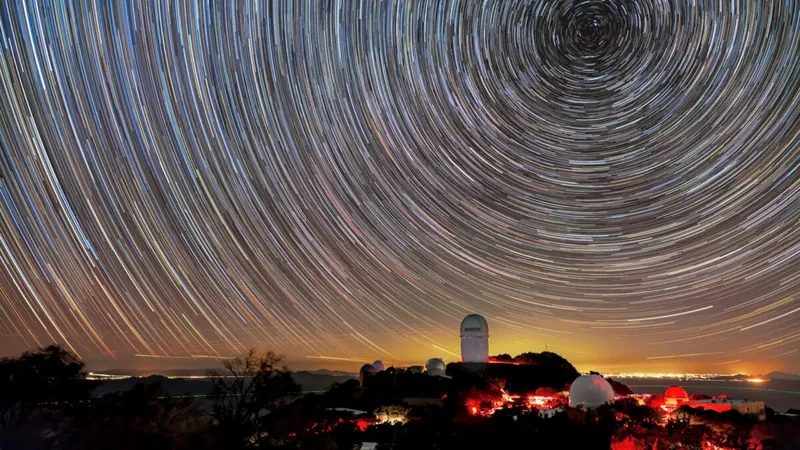
Revolutionary Study Suggests Black Holes May Be the Key to Understanding Dark Energy
2025-08-22
Author: Yan
Dark energy, the mysterious force driving the universe's rapid expansion, has puzzled scientists for years. A bold new study proposes that black holes could be the unexpected source of this enigmatic energy, reshaping our understanding of the cosmos.
In a groundbreaking paper published in Physical Review Letters, researchers harnessed data from the Dark Energy Spectroscopic Instrument (DESI) to explore the cosmologically coupled black hole (CCBH) hypothesis. This intriguing theory suggests that black holes may transform the remnants of dead stars into dark energy, indicating that this force is not as constant as previously thought.
A Cosmic Lifecycle?
Instead of viewing dark energy as a random phenomenon, the CCBH hypothesis portrays it as a natural byproduct of cosmic evolution—a kind of cosmic recycling process that has developed since the Big Bang.
This theory cleverly correlates the rates of dark energy production with the consumption of matter and the established rate of star formation, as confirmed by both the Hubble Space Telescope and the James Webb Space Telescope.
Bridging Gaps in Cosmology
The research also addresses discrepancies between DESI data and neutrino experiments conducted on Earth. Previous observations suggested a lack of neutrinos in the universe's mass budget, but this theory reconciles those differences.
Gregory Tarlé, a co-author of the paper and DESI scientist from the University of Michigan, remarked, "This is the first time we are adapting data to a specific physical model—and it aligns remarkably well. While it’s undoubtedly intriguing, it might even be described as compelling, though we reserve that term carefully in our field."
Maps of the Universe
Located in Arizona, DESI is an astronomical marvel, mapping thousands of galaxies with 5,000 robotic eyes that capture images every 15 minutes. Since its launch in 2018, it has created an unparalleled 3D map of the universe, allowing physicists to make significant advancements in understanding dark energy.
However, this detailed mapping has revealed a contradiction: less matter appears to exist today than in the past, creating tension between cosmology and particle physics regarding how we interpret the early universe.
A Promising Path Forward
The CCBH model provides a plausible explanation. Astrophysicist Rogier Windhorst from Arizona State University stated, "The neutrino mass probability aligns with ground-based experiments, presenting an exciting alignment of findings." By linking seemingly unrelated cosmic phenomena, this model opens new avenues of research.
Duncan Farrah, another co-author and astrophysicist at the University of Hawaii, expressed optimism about future investigations: "While the model is promising, it requires further thorough examination from the scientific community, especially as more DESI data becomes available."
A New Era in Cosmology
As new instruments and insights flood the field, we find ourselves in a golden era of cosmology—marked not only by discovery but also by the chaos of unraveling the universe's mysteries. If the Big Bang could orchestrate the birth of the universe, we may just be capable of piecing together our understanding of its workings.




 Brasil (PT)
Brasil (PT)
 Canada (EN)
Canada (EN)
 Chile (ES)
Chile (ES)
 Česko (CS)
Česko (CS)
 대한민국 (KO)
대한민국 (KO)
 España (ES)
España (ES)
 France (FR)
France (FR)
 Hong Kong (EN)
Hong Kong (EN)
 Italia (IT)
Italia (IT)
 日本 (JA)
日本 (JA)
 Magyarország (HU)
Magyarország (HU)
 Norge (NO)
Norge (NO)
 Polska (PL)
Polska (PL)
 Schweiz (DE)
Schweiz (DE)
 Singapore (EN)
Singapore (EN)
 Sverige (SV)
Sverige (SV)
 Suomi (FI)
Suomi (FI)
 Türkiye (TR)
Türkiye (TR)
 الإمارات العربية المتحدة (AR)
الإمارات العربية المتحدة (AR)